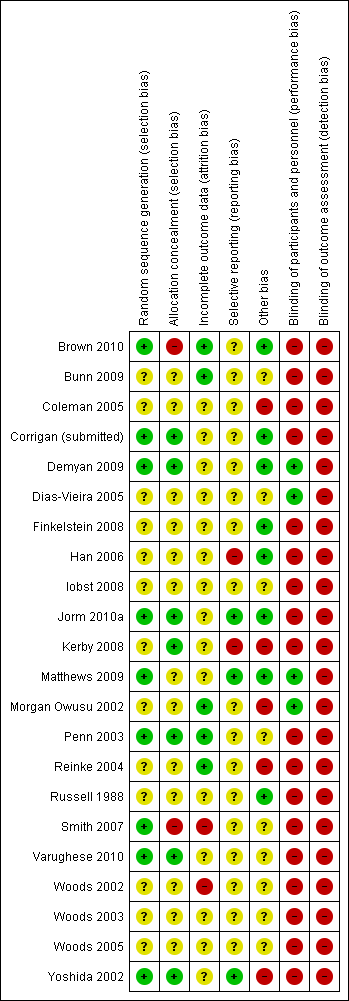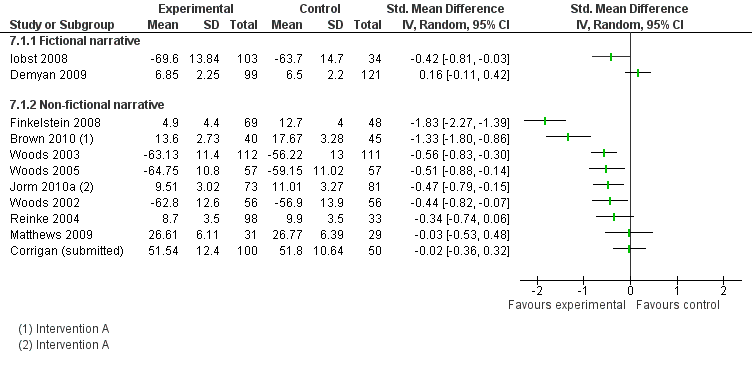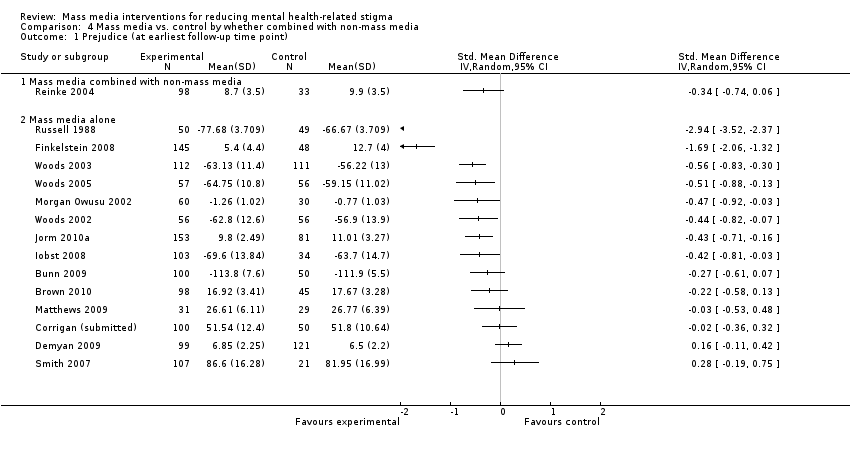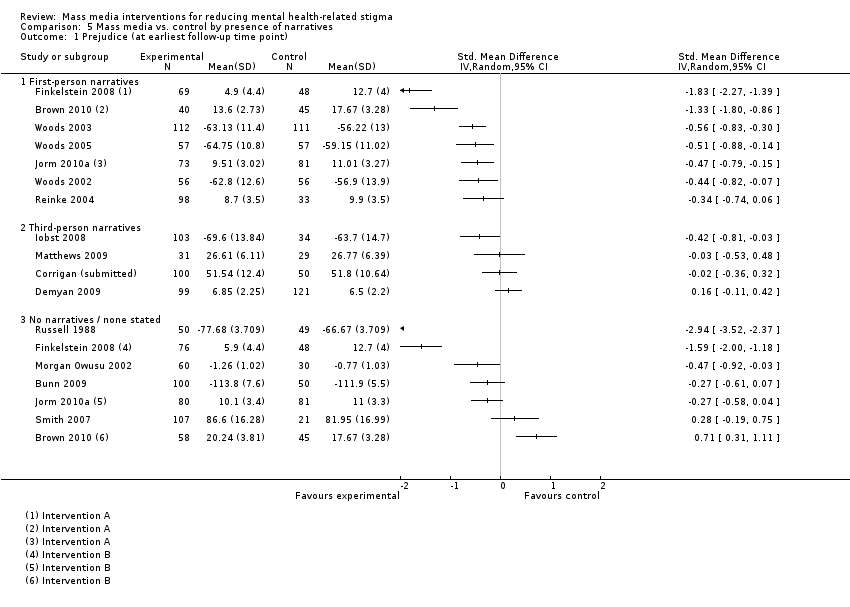| Mass media compared with inactive control for reducing mental health‐related stigma |
| Patient or population: General public or any of its constituent groups (excluding groups comprising solely of people with mental ill health) Settings: Any Intervention: Mass media Comparison: Inactive control |
| Discrimination (i) not registering to attend focus group with people with schizophrenia (immediate)1 (ii) not visiting sheltered workshop for people with mental illness (9 months)2 (iii) distance placed between chairs when anticipating meeting with person with Tourette's syndrome3 | ORs (802 participants, 2 studies) (i) 1.30 (0.53 to 3.19) (i) 1.19 (0.85 to 1.65) SMDs (394 participants, 3 studies) (iii) median SMD ‐0.25 Range of SMDs ‐0.85 (‐1.39 to ‐0.31) to ‐0.17 (‐0.53 to 0.20) | 1196 (5) | ⊕⊕⊝⊝
low | Quality of evidence downgraded for study limitations (risk of bias) and indirectness of measures (see Quality of the evidence for full details) |
| Prejudice Multiple scales4 Follow‐up (i) Immediate5 (ii) 1 week to 2 months6 (iii) 6 to 9 months7 | Median SMD (i) ‐0.38 (ii) ‐0.38 (iii) ‐0.49 Range of SMDs ‐2.94 (‐3.52 to ‐2.37) to 2.40 (0.62 to 4.18) Median SMDs are equivalent to reductions of 0.22, 0.22 and 0.29 points on the 1 to 4 point SDS scale [7], which is equivalent to reducing the level of prejudice from that associated with symptoms of schizophrenia to the level associated with symptoms of major depression8 | 3176 (19) | ⊕⊕⊝⊝
low | Quality of evidence downgraded for study limitations (risk of bias) and indirectness of populations (see Quality of the evidence for full details) |
| Cost (i) Audiovisual public service announcement (ii) a) CD‐ROM b) printed manual (iii) magazine article | Relative costs (i) 100 US dollars (equivalent to £64 GBP) vs. nil (ii) a) 35,000 Australian dollars (£22,404 GBP) for 250 e‐learning CDs @ 140 dollars per CD (ii) b) 7,140 Australian dollars(£4,570 GBP) for 238 manuals @ 30 dollars per manual vs. nil (iii) 'printing costs' vs 'printing costs' | 416 (3) | ⊕⊝⊝⊝
very low | Quality of evidence downgraded for inconsistency of results, imprecision, and 'other' (data only being available on request, lack of cost‐effectiveness data) (see Quality of the evidence for full details) |
| Unforeseen adverse effects | Statements in two studies: (i) ‘Given that this was an educational intervention with a non‐clinical sample, there was no formal enquiry about adverse events. Informally, no adverse events were reported'; (ii) ‘No adverse effects, such as an increase in stigma as a result of the intervention, were identified’ | 2 (455) | ⊕⊕⊝⊝
low | Quality of evidence downgraded for study limitations (risk of bias) and imprecision (see Quality of the evidence for full details) |
| CI: Confidence interval; OR: Odds ratio; SMD: Standardised mean difference |
| GRADE Working Group grades of evidence
High quality: Further research is very unlikely to change our confidence in the estimate of effect.
Moderate quality: Further research is likely to have an important impact on our confidence in the estimate of effect and may change the estimate.
Low quality: Further research is very likely to have an important impact on our confidence in the estimate of effect and is likely to change the estimate.
Very low quality: We are very uncertain about the estimate. |

























